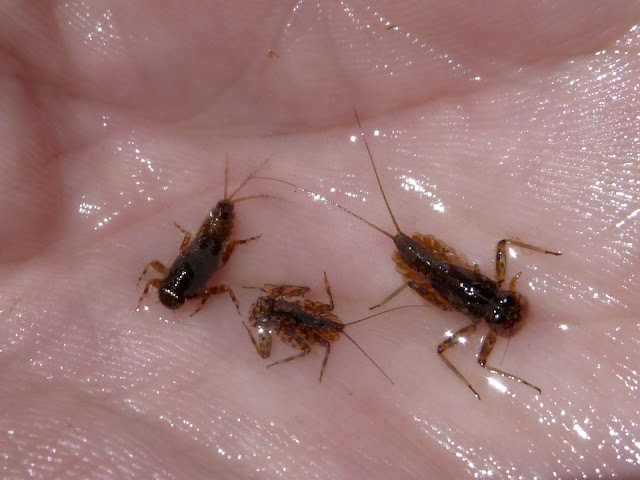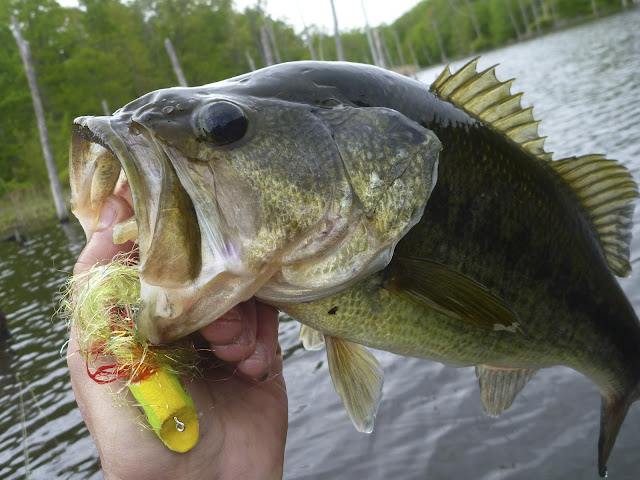A few weeks ago, I was asked by Barry Dombro to try his innovative new strike indicator tool that he developed in New Zealand. We don't do a lot of reviews here on the blog, but I was willing to check it out. I started fly fishing with indicators and still use them across a lot of applications, as do most fly fishermen. The product intrigued me because I spent the better half of the Fall trying different types of indicators out and Adam even resorted to making his own. Barry's idea seemed to address some of the things we were looking for in an indicator.
What immediately separates Barry's concept from every other indicator out there is that your basically getting a tool that allows you to fashion your own indicators out of New Zealand wool (provided in the purchase). The tool resembles a large open needle that contains a bulbous grip and loop to attach to a vest/pack. On the needle, slides tubing used to attach the wool to the line. It can handle about a dozen pieces of tubing, good enough for multiple trips on the water. The tool has been well thought out for its intended purpose. It is not too large that it gets in the way or too small that it can be lost. It is an ideal size. Rather than get into the details about how to attach the indicator to the leader using the tool, just watch the video below:
Advantages, disadvantages, and final thoughts.
Advantages:
1. What separates this indicator is that it is completely customizable to specific fishing situations. If you need a large bulky indicator to keep afloat a double nymph rig with split shot in fast water, you can create one. If you need a minuscule piece of wool to allow you to track soft takes in skinny water, you can cut one of those too.
2. Once assembled, the indicator can slide up and down on the leader to adjust automatically to any fishing depth and also water flow. The most common mistake that anglers make when fishing with an indicator is not getting down to the right level where the fish are feeding. Most indicators, especially the most popular, thingamabobber, do not allow you to easily adjust the depth of your flies. In fishing situations where a few inches can mean the difference between not hooking up and having a banner day, this will allow you to adjust after any cast, quickly and efficiently.
3. Adjusting the indicator once on the line does not produce any problems to the leader. Most indicators that are adjustable damage or kink leaders. For those that do no make their own leaders, why damage something that can cost upwards of fifteen dollars?
4. Once you get the hang of how the material and tool works, you can have a new indicator on your leader in under a minute.
5. Likewise, you can remove the indicator even more quickly than you can put one on. I can't tell you how many times I have been fishing an indicator rig and I came across a pool with rising fish or a run ideally suited for swinging a streamer. If you want to change, you have to re-do your entire rig just to adjust to the different fishing situation. Here I can adjust and be fishing a dry fly as fast as I can tie one on.
6. The last advantage that I admire about the product is that it is completely knotless. I tend to tie knots directly to my thingamabobber to produce a right angle presentation. For the most part, this has been reliable for me. However, every now and then, the ring where the leader and tippet are attached has a habit of causing a knot to slip or break which can result in losing a nice fish and a set of flies.
Disadvantages:
1. My first complaint relates towards any yarn/wool indicator. Like a dry fly, you constantly have to be reapplying floatant to keep it riding high. Yarn/wool indicators work most efficiently when riding high allowing you to detect every little stop, bump, and twitch. If they are saturating, riding low, or sinking they aren't doing as good a job as they can. The wool packaged with the product is top notch and naturally floats right out of the package but still requires dressings every hour especially when fishing faster water.
2. It can take a lot of practice to make the ideal indicator that you are looking for. In the beginning, I found myself wasting a lot of the provided wool as I experimented with the amount the tubes/leader size could handle. Once you practice and get the hang of things, I would cut out several pre-determined sizes and shapes for different situations and place them in a fly box, leader wallet, or small baggies in your vest/pack.
3. That brings me to another thing I don't like, storing the pieces of wool. Once you pre-determine the sizes you like, you might need to dedicate a small compartment fly box to storing them or use small rubber (those small orthodontist bands work the best) bands to keep the wool together.
4. My first experience fishing with this indicator was during a weekend trip where it rained the entire time. Trying to attach dry wool to the leader with wet fingers proved to be difficult because the wool would stick to my fingers creating a mess.
Final Thoughts:
Overall, I like this concept a lot. In the Fall, I was searching for an indicator that was completely adjustable to the depth/flow I was fishing. This provides an ideal solution to the main thing I was looking for. I think this system will truly shine in the smaller tributary waters of the Great Lakes during Steelhead season, especially in Pennsylvania and Ohio Erie tributaries. An article that goes into great detail about indicator fishing these waters is by John Nagy. His article, "
The Top 10 Do's and Don'ts For Indicating for Steelhead," really touches on points that can be fully utilized by Barry Dombro's new strike indicator system. I am looking forward to fishing and experimenting with this system more, especially during the Fall migratory runs of steelhead. If you are looking to add another weapon to your arsenal and enjoy using other yarn/wool type indicators, I recommend checking out this product. It will not completely replace my preferred indicators but it definitely has its place and when properly utilized will yield excellent results.
To check out more go to:
www.strikeindicator.com


















































